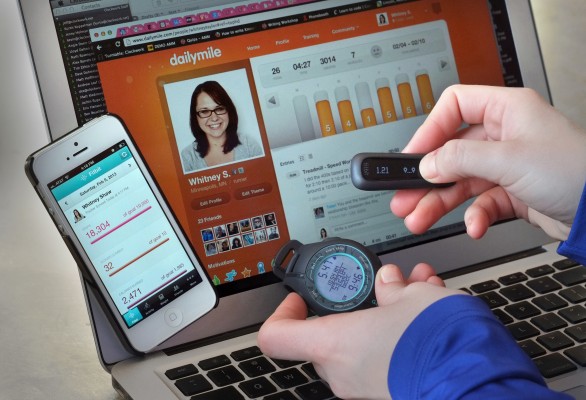Fitbit Technology is the Key to a Healthier Lifestyle
MCT
Fitbit’s wireless syncing feature enables users to access their activity data across all online devices. (Photo Courtesy of Tom Wallace/ Minneapolis Star Tribune via TNS)
April 7, 2016
Since the Lincoln Center campus is located in the heart of New York City, walking is no longer just for enjoyment, but a necessity. Whether it’s walking to and from a work-study position or trekking up the stairs right before class, students are always burning calories. For the residents who walk to and from McMahon or McKeon Hall, or for the commuters who hop off the train at the 59th Street Columbus Circle subway station, students are constantly moving.
Some of these students utilize wearable technology to track their daily activity. The eight products currently available from Fitbit, the leader in activity-tracking technology, vary in size, pricing and function. However, they all share the same goal of providing their users with accurate data on their daily activity. In addition, students can receive discounted prices for these products through an Amazon Prime membership. Two of the premier products are the Fitbit Charge and Fitbit Charge HR. They both track your daily steps, distance, calories burned, floors climbed and active minutes. Also, both offer features such as Caller ID and sleep monitoring. Caller ID notifies users of incoming phone calls, while the sleep tracker helps users better understand the quality of their sleep. A helpful add-on to the devices is that the daily activity data is synced onto compatible devices and can be accessed online.
Data from two female Fordham students was analyzed in order to get a rough idea of how knowledge of one’s daily activity is beneficial. The two students, Elodie Huston and Cecile Neidig, utilize Fitbit technology in order to track their daily activities. After assessing their data, it’s fair to conclude that many other Fordham students should look into investing in similar products in order to better evaluate their health needs.
Huston’s daily activity was examined for the first two weeks of February 2016 in order to conduct this trial. In the first week, from Feb. 1 through Feb. 7, the daily average of steps taken was 9,165. This equates to an average of 3.97 miles traveled on a daily basis. As a result, 2,277.71 calories were burned daily. This conclusion is interesting, because the Institute of Medicine suggests that the caloric intake for active female college students between the ages of 18–30 should be 2,400 calories each day. Thus, an excess of 2,277.71 calories would have to be consumed every day in order to maintain the balance set by the Institute of Medicine.
The following week’s examination ranged from Feb. 8 through Feb. 14. The average steps taken by Student A each day was 9,801, which equates to an average daily distance of 4.33 miles. This results in an average of 2,343.14 calories burned every day. An excess of 2,343.14 daily calories would have to be consumed in order to be on par with the standards set by the Institute of Medicine.
Neidig was also examined during the first two weeks of February 2016, and understanding her daily activity data accentuates the significance of this study. During Neidig’s first week, the average number of daily steps taken was 2,787, which equated to 274 calories burned daily. The second week’s average number of daily steps taken during this time frame was 2,871, which equated to a daily loss of 223 calories.
While the daily activity data examined from both students contrasts greatly, there are still valuable conclusions to be drawn. Huston necessitates a higher daily caloric intake in comparison to Neidig in order to maintain a healthy diet. An important factor to consider is that students have varied daily schedules which require different amounts of physical activity, thus culminating in the difference between the amount of daily steps and calories burned.
The broader lesson here is that all students can use wearable technology in order to understand their daily health needs and to create a more sustainable exercise and dietary plan. The Harvard School of Public Health suggests a diet that consists of plenty of fruits, vegetables, whole grain foods and healthy sources of protein and fat. Calories are a measure of the energy content of food. Thus, understanding the science of calories is crucial in weight control, since eating more calories than a body needs can lead to weight gain. Keeping one’s daily caloric intake constant with his amount of calories burned through regular metabolism and physical activity is important in maintaining a stable weight.
This wearable technology can be the gateway into a new generation of more healthy-minded individuals. A study by the Centre for Creative and Social Technology at Goldsmiths, University of London, found that 71 percent of Americans said that wearable technology “improved their health and fitness.” Suffice it to say that many Fordham students can also be beneficiaries of this technology. Then, they wouldn’t just be a statistic, but living examples.










